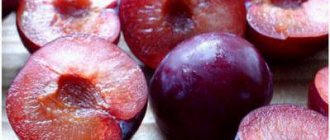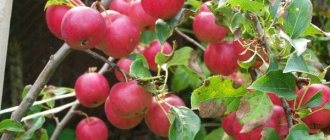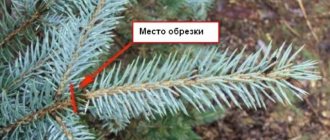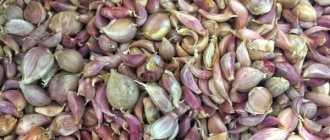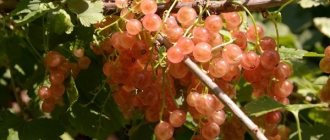Main characteristics
The tree has a non-standard “column” shape with small branches extending from the trunk. The apricot tree is a close relative of roses and peaches, so its pink or snow-white flowers are distinguished by their aroma and beauty, and the flowering itself occurs in the spring months - March and April. The leaves can be of various shapes - round, heart-shaped or oval, but always have a pointed tip.
The fleshy apricot fruit has one pit with a hard shell, but often with an edible kernel. The fruit ripening period occurs in August, and the weight of each ripe fruit ranges from 3 to 19 grams. Ripe fruits, depending on the variety, may have:
- pale or bright yellow;
- orange;
- white;
- red;
- black;
- red-orange color.
Columnar apricot trees can be grown in small garden plots. This plant is resistant to pests and diseases. Perhaps the only drawback of such trees is specific care:
- all ovaries should be removed in the very first spring;
- side branches should be pruned annually.
Growing
Proper watering, processing, fertilizing and pruning are the main elements of caring for any variety of columnar apricot.
- Waterlogging or lack of moisture are the main causes of many apricot diseases. The first mistake leads to root rot, the second to shredding of the fruit. Typically, plants are watered once every 2 weeks. During the rainy season, the amount of watering is reduced and increased during drought. Watering is carried out by drip method or surface along grooves.
- Fertilizing allows trees to grow better, bear fruit more abundantly and improve disease resistance. Plants especially need mineral fertilizers containing nitrogen, phosphorus and potassium.
- Prince March and other columnar apricots require regular pruning. Always remove damaged branches, as well as branches leaning close to the ground. The side branches are pruned by 5–10 cm and excess shoots that thicken are cut out. Thinning shoots improves the appearance of the tree and its productivity.
Columnar apricots (such as Prince March) require regular pruning
Variety "Prince Mart"
This apricot tree is frost-resistant (withstands temperatures down to -35°C) and is practically not susceptible to infection by diseases and pests. "Prince Mart" is suitable for cultivation in central Russia and produces a bountiful harvest. The tree is not tall, grows only up to 2 meters, and caring for it will not cause any difficulties even for novice gardeners.
Apricot fruits ripen in the second half of August; they have an original taste and a bright orange color, with a slight red “blush”. The weight of each fruit varies from 30 to 60 grams. The peculiarity of caring for the plant is to completely remove the flowers in the first year. If this requirement is met, you will be able to enjoy the fruits already in the second year of tree growth.
The fruits of "Prince March" are delicious fresh - the pulp is sweet, easily separated from the stone, and when processed - apricots make amazing jam, compote, jam, juice and other preparations.
Variety "Star"
This variety is characterized by increased resistance to frost, it practically does not get sick and is not susceptible to parasites. The “star” variety can be grown almost everywhere, caring for apricot trees is easy, and they produce a plentiful and large-fruited harvest.
The peculiarity of this variety is that the fruits are quite large - their weight can reach 100 grams. Apricots have a pleasant sunny yellow color, a delicious aroma and are versatile for consumption - they can be eaten fresh, dried, or used for preservation.
Caring for the plant consists of harvesting flowers in the first year, and in subsequent years, timely pruning of branches. With proper care of the apricot tree, it will begin to bear fruit in the second year after planting on the site.
Planting apricot in spring
The decorative properties of trees are an undoubted advantage of columnar apricot varieties. It is recommended to plant this type of plant at a distance of no more than a meter from each other. As a result, the plants will be comfortable, they will produce a significant harvest, and you will have a beautiful garden.
When planting in spring, the following algorithm must be followed:
- The landing pit is being prepared. Its size and depth should be such that the roots of the plant fit there in a straightened form. Pay attention to the place where the seedling is grafted - it should be above the ground surface.
- Before the seedling is placed in the ground, it is necessary to place phosphorus and potassium fertilizers in the dug hole, mix them with loose soil and only then place the plant in the planting site.
- It is important to ensure that the apricot grows evenly, without leaning to the side.
- After planting, apricot trees are watered abundantly, but so that the planting mound is not washed away. In the future, it is recommended to water by digging holes near the roots of the tree and filling them with water.
Preparing for landing
In the southern regions and subtropics, columnar apricot can be planted in spring and autumn. In the northern regions, planting is carried out only in spring. Preparations for spring planting begin in the fall:
- Seedlings should not be purchased secondhand, only in nurseries and specialized stores. It is better if the seedlings are two years old; they must be carefully examined and healthy trees, 1-1.2 m high, with developed roots and a noticeable grafting site, must be selected.
- Dig a landing hole measuring 50*50*50. A drainage layer 4-5 cm thick is laid on the bottom. Crushed stone, pebbles, expanded clay, and fragments of clay shards are suitable as drainage materials.
- The top layer of soil 15-20 cm thick is mixed with an equal volume of humus or rotted compost, and half the amount of coarse river sand is added. If the soil is acidic, then add dolomite flour, slaked lime or crushed chicken egg shells. 100 g of urea, 80 g of saltpeter, 150 g of superphosphate are added there per pit. You can replace mineral fertilizers with wood ash (1.2-2 l).
- The prepared soil mixture is poured into the bottom of the hole in the form of a mound, and a peg is hammered in at a short distance from the top to support the seedling. Cover the hole with roofing felt and leave it like that until spring.
Caring for planted apricots
It is necessary to care for seedlings regularly. Fertilizing is carried out three times during the growing season; commercial fertilizer, slurry 1/10, saltpeter or chicken droppings (in proportions 1/30) are suitable for this:
- the first fertilizing can be done after planting;
- the second - how the first leaves appear (in about 2 weeks);
- the last one - a similar period (14 days) after the second.
In the first year after planting, care should be taken to remove all flowers from the seedling in the spring, and in the future it is necessary to promptly pluck out excess branches. Preventative spraying against pests can be carried out with preparations intended for apple trees - this will preserve the health of the trees and increase the yield.
The weakest point of apricot columnar trees is the apical bud - if it freezes or dies, the plant will produce several vertical shoots. These shoots can be saved. If it is necessary to form a strict column, then the shoots are pinched, leaving no more than 3 buds at their base. This action can be repeated next year.
Plants, especially young ones, should be protected from frost. Suitable for this purpose:
- shavings;
- coniferous spruce branches;
- straw;
- Also, after snow falls, you can use it to bury trees.
When protecting plants from frost, make sure that mice, hares and other rodents do not gain access to the trunk and roots of the apricot tree.
Columnar apricots: features of the species (video)
The tree of a new variety of apricot has an interesting column-like shape.
Short branches extend from the straight trunk, the length of which does not exceed 20 cm. In the south, the height of the plant reaches 3 meters; in the middle zone the trees are slightly lower. White or pink buds bloom on them in early spring - at the end of March or April. The leaves, regardless of shape, point upward. Orange, red or yellow apricots ripen on the side branches. The weight of the fruit depends on the variety, on the conditions of cultivation and care, on average it weighs 20 g, some specimens reach 80 or even 100 grams, but there are also very small berries. Summer residents are happy to plant columnar apricots, since the tree needs no more than a square meter of area to grow and bear fruit. The advantages of the varieties include:
- Possibility of canning fruits for the winter.
- Good yield.
- Interesting appearance of the plant.
The fruits appear in the third year, picking them is easy and convenient. Columnar apricots are immune to many diseases of garden trees. However, not all summer residents know how to form a crown, that the plant needs to be pruned every year, without this the crop does not develop normally, and few fruits ripen.
Scientists did not stop at breeding just one hybrid of a garden crop, but created several varieties that differ in ripening time, color and weight of fruits, recommended by the region for cultivation. The best varieties of apricots for the middle zone should be chosen among columnar trees that are not afraid of cold winters and are easily located in a small area.
To avoid taking up space with pollinating plants, you need to plant self-fertile hybrids. Perfect for the Moscow region:
- Gold;
- Star;
- Sunny.
The fruits of the Prince Mart variety ripen by the end of July and are already set on two-year-old trees. Apricot tolerates severe frosts, is rarely susceptible to disease, and does not require additional pollination. Three or four plants will provide enough fruit for a family to eat and preserve for the winter. In the northern regions, the variety can be planted in greenhouses, since the height of the tree barely reaches 2 meters. The bright orange fruits weigh about 60 g.
Although the fruits ripen quite late, a whole bucket of juicy and sweet fruits are harvested from one compact plant, differing in:
- yellow color;
- pulp with a pleasant aroma;
- thin skin;
- weighing about 80 grams.
Trees of the Gold variety more than 2 meters high do not die at 33-34 °C below zero. In August, oval-shaped apricots with an unusual pinkish blush ripen. The productive Sunny variety is cultivated in mid-latitudes. It tolerates low temperatures and does not freeze at minus 35 degrees. The golden fruits ripen in August and weigh up to 60 grams, but pollinating plants need to be planted next to the apricot.
The height of the tree is about 2.5 m, but up to 1.5 buckets of fruit are collected from it. Sunny also takes root in partial shade, but the yield in such a place drops significantly. In Kuban, where the climate is favorable and the soil is fertile, any variety of stone fruit crops is grown.
Both apricots and hybrids bred through selection are demanding of light and love the sun. In the absence of such conditions, if fruits are set, they will be in small quantities, and the taste will sharply deteriorate. Trees bloom very poorly in the shade.
You don’t need a lot of space for a columnar apricot, so you can always find a small area where the cold wind does not hit and there are no drafts. It is easy to plant a tree between buildings at a distance of 20-15 centimeters from them, but so that no shadow falls on it. Apricots should not be placed in lowlands, where both melt and rainwater stagnate and cool and humid air accumulates. The tree will be comfortable if you find a place for it at the foot of a gentle slope.
In the southern regions, columnar apricots are planted in open ground in both October and April. In the fall, it manages to take root and get stronger before the cold weather arrives no earlier than December. In the middle zone, trees are planted only at the end of spring or in the first month of summer, since frosts are a frequent occurrence here, and the hydrometeorological center is not able to predict when they will come.
Apricots develop poorly and often get sick in the place where they used to grow:
- tomatoes and peppers;
- raspberries and strawberries;
- potatoes and eggplants.
Such crops are attacked by helicopters and infect fruit trees with fungi. It is very difficult to cope with the pathogen. Apricot seedlings, preferably 2-year-old ones, are placed at a distance of 80 cm-1 m, leaving at least a meter between rows. Trees take root well on loose soils, permeable to moisture, and grow on loams, gray soils and chernozems.
It is advisable to buy seedlings in special nurseries that are located in your area, since the apricots that they sell are adapted specifically to this climate. The height of the tree should be within a meter. It is necessary to check whether the roots bend, whether the seedlings have healthy bark, and whether there is a trace of grafting. You should not buy apricots grown from the seed.
The hole for the tree is prepared in the fall. Both its depth and width should be within 60-70 cm. To prevent the water from turning sour, expanded clay or small crushed stone is poured onto the bottom in a 40 mm layer, after which wood ash or mineral fertilizers in the form of urea, superphosphate or potassium nitrate are added.
The top layer of earth is mixed with humus and sand, placed at the bottom of the hole, a support for the tree is installed nearby and covered, and in the spring:
- Make a hole in which the apricot is planted vertically.
- Pour and compact the soil, leaving a root neck of about 5 cm above the surface.
- A furrow is made along the tree trunk, sprinkled with peat or straw.
- The tree is attached to a support and watered with 2 buckets of warm water.
In order for the columnar plant to take root faster, the roots are soaked in a solution of potassium permanganate or a biostimulant, after which they are shortened a little and dipped in mash made from clay and manure.
This is an unusual tree and is not grown like a simple apricot. Some techniques are unusual for fruit trees, and especially stone fruits.
Apricot sprigs that should not be trimmed
In the first year after planting, all buds are removed during the flowering period. This procedure allows you to divert precious energy and juices for better rooting of the tree.
If the flowers are left, then, like any living creature, the apricot will try its best to produce fruit for procreation. In this case, the roots will be left without nutrients. Experienced gardeners do the same when growing roses.
Mandatory annual pruning. A regular apricot does not undergo such a regular procedure.
Only diseased, weak or unnecessary branches are cut out. Without this procedure, a columnar apricot will very soon lose its grace and unusual appearance. Pruning for apricots is also necessary because a large harvest of fruit can break the not very flexible long branches. The branches are cut so that they are the same length.
Superficial root system. Gardeners are accustomed to the fact that apricots have a tap root that penetrates very deeply. This property of the plant makes it difficult to replant.
The columnar apricot has a root with a completely different structure. Therefore, the tree can be planted in conditions where groundwater is not very deep. Thanks to its shallow root system, this type of apricot can be grown in large pots.
Using these techniques, the apricot will be able to please the gardener with large and tasty fruits already in the second or third year.
To get beautiful trees and a good harvest, you must take into account the needs of apricot.
Light. The more sunlight hits the trees, the more abundantly they bloom. The sun warms the fruits and gives them strength to ripen. In this case, even direct sunlight is only beneficial for the apricot.
Protection from drafts. This condition is also necessary for the health of the green pet. The dimensions of the columnar apricot allow it to be placed in the most wind-protected places. In a calm situation on the south side of the house he will be very comfortable. Sometimes a corner of calm appears between the buildings on the site. It is quite small, but its size is enough to house an experimental apricot.
Apricot harvest
Frost protection. In the first year, the apricot column needs protection from winter frosts. For this tree, it is not so much frost that is scary as temperature changes. Spruce spruce branches can provide protection from frost and rodents for the first winter.
The tree is not large and can easily be covered with spruce branches and tied with twine. It is strictly forbidden to use film as a protective material. Such shelter is detrimental to the tree, because it impedes air exchange and leads to damping off.
Correct landing. Having planted an apricot incorrectly, the gardener immediately dooms it to death. The grafting site should not be allowed to be at ground level or in the ground. The soil should end where the first roots begin. The pit for planting columnar apricots is prepared in advance. This is done to ensure that the soil settles before planting and the graft does not sink when the ground settles.
Fertile soil. To plant apricots, you need to prepare a soil mixture of humus, forest soil and sand in a 2:2:1 ratio. Instead of forest soil, you can use purchased soil in bags.
Feeding. You can grow a healthy and strong tree with regular feeding. The first feeding is done when laying the hole. Long-acting fertilizer AVA or universal mineral fertilizer “Diammophos” is added to the prepared mixture for planting. This year the tree will no longer need fertilizing. Subsequently, apricots are given three additional feedings per season.
In the spring, as soon as the soil thaws. At this time, complex mineral fertilizer such as “Fertika” or any other is applied.
After harvesting the fruit, the apricot is fed with fertilizer that does not contain nitrogen, or the soil around the tree is simply mixed with humus. The same soil can later be used to spud the tree before wintering.
How to grow apricots in the northern regions
Apricot is a heat-loving crop, but this wonderful fruit tree can also be grown in the northern regions of Russia. In order for the tree to take root, not die in the cold and begin to produce a consistently high yield, gardeners are recommended to purchase varieties adapted to the climate. As a rule, zoned tree varieties are purchased from local nurseries.
Apricot trees are not particularly demanding on the soil; they have a powerful root system and bloom in early spring. If during the flowering of apricots there is a danger of frost, then gardeners create a smoke screen to preserve the inflorescences and, accordingly, the future harvest.
Planting apricot trees in northern latitudes is practically no different from the planting procedure anywhere else:
- the seedling is placed in a pre-fertilized hole;
- monitor the evenness of its installation;
- Water abundantly and fertilize periodically.
Before the onset of cold weather, trees are covered with improvised means, and as snow falls, they are covered with it.
You may also be interested in the article in which we talk about columnar peaches and nectarines.
Reviews from gardeners
Columnar apricot trees are loved by many gardeners - these plants do not take up much space, do not require particularly difficult care and bring an excellent harvest. Reviews about apricots speak for themselves:
Sonya: “I have been growing apricots in my garden for the 8th year now and I can’t get enough of them. For 6 years I have been getting an excellent harvest at the end of summer - from five trees I have enough fruit for both food and canning.”
Mikhail: “I planted 3 apricot trees last year, but only one survived the winter - I didn’t take good care of insulating the plants for the winter, and our frosts were more than 40 degrees. The surviving apricot has already bloomed and now I’m waiting for the fruit.”
How to prune correctly
One of the features of apricots and all stone fruits is the high activity of the buds - almost all those that hatch begin to grow. Moreover, the fruits are formed mainly on branches that grew last year, or on bouquet branches, spurs and other fruit formations. Their lifespan is usually about three years.
As a tree ages, its growth processes are inhibited. Flower buds are formed only on short shoots, and at the end of fruiting these branches become bare. And because of the short life of bouquet branches, older branches also become bare. Therefore, adult apricots need to maintain growth processes, and this is what you need to focus on when pruning.
Pruning a columnar apricot is a very important point. It is best to stick to the tiered form (see photo), highlighting 5-6 main branches and leaving about 40 cm of distance between them. Correction of the crown shape begins in the first year of the plant’s life.
- If, when planting in spring, the seedling has no branches, it is cut off at a height of 80-90 cm.
- If there are lateral branches, then two of them are left, if possible those directed along the row, and shortened by half.
- All other branches are cut into a ring. The length of the central conductor should be cut 20-25 cm longer than the rest of the branches.
In summer, all competitive shoots that form at an acute angle are removed. In subsequent years, 3-4 more main branches are selected and pruned, on which branches will then form. The recommended distance between them is 35-40 cm.
To form a beautiful crown, you need to ensure that the upper shoots do not overtake the lower ones. If there are excess shoots, they can be shortened by turning them into fruit branches.
Once the desired crown shape is achieved, all that remains is to maintain it. To do this, you need to maintain the active growth of shoots by pruning them by shortening them by a third (if the branching of this variety is good) or by half. If the tree grows very quickly, additional pruning can be done in the summer, shortening the shoots by half or a quarter, depending on the intensity of growth.
